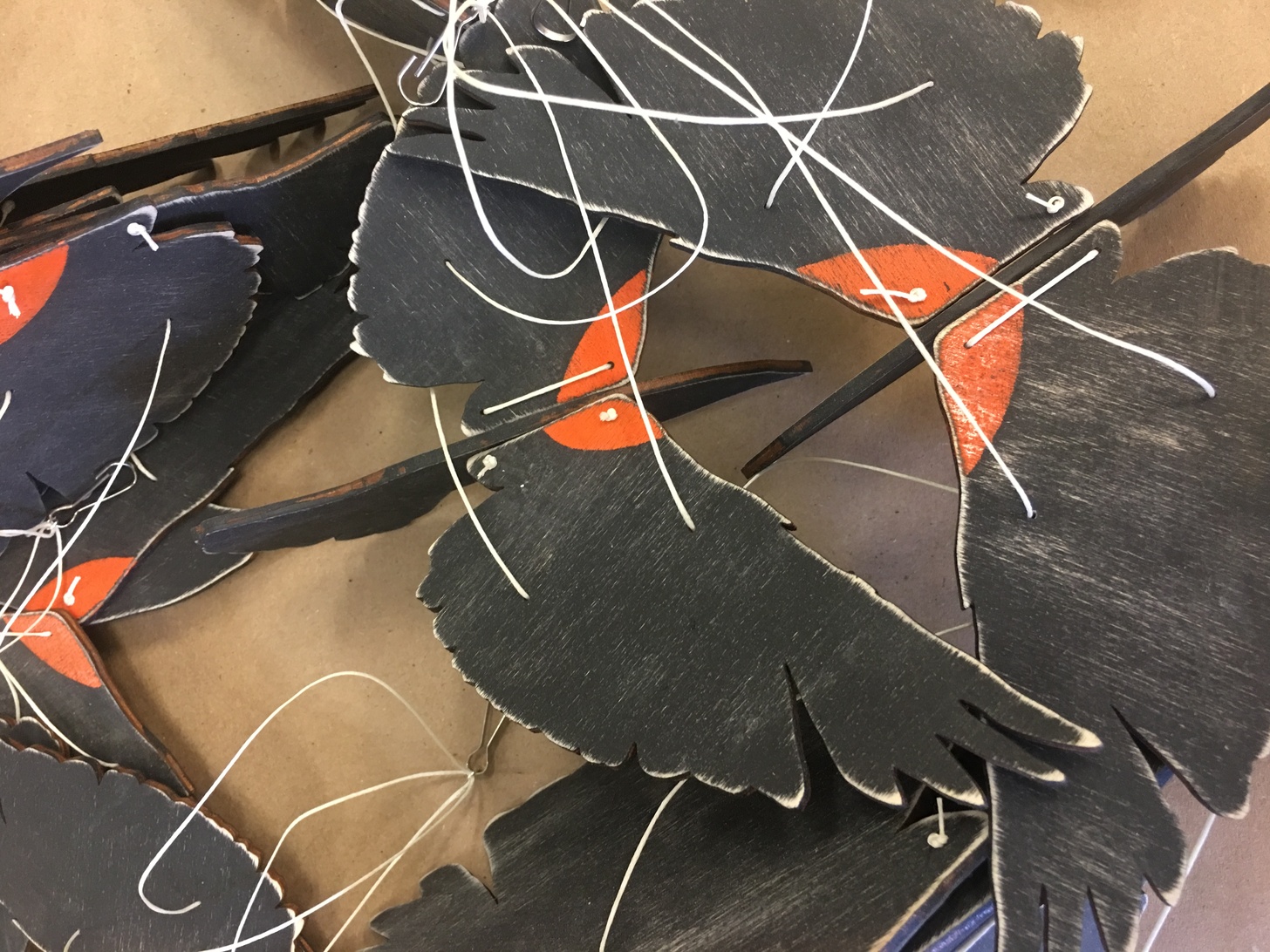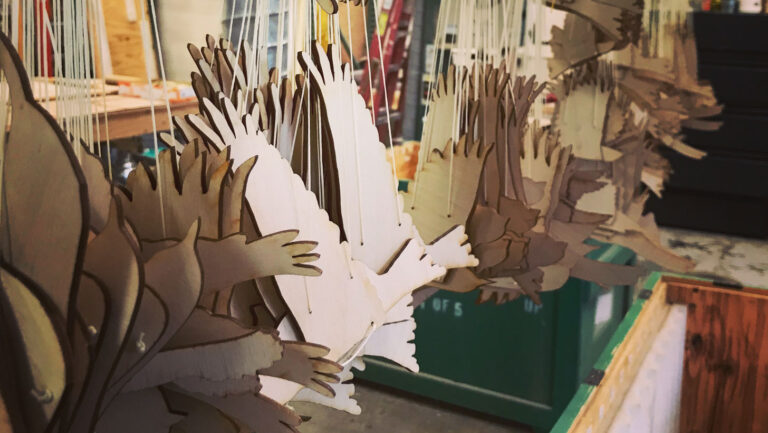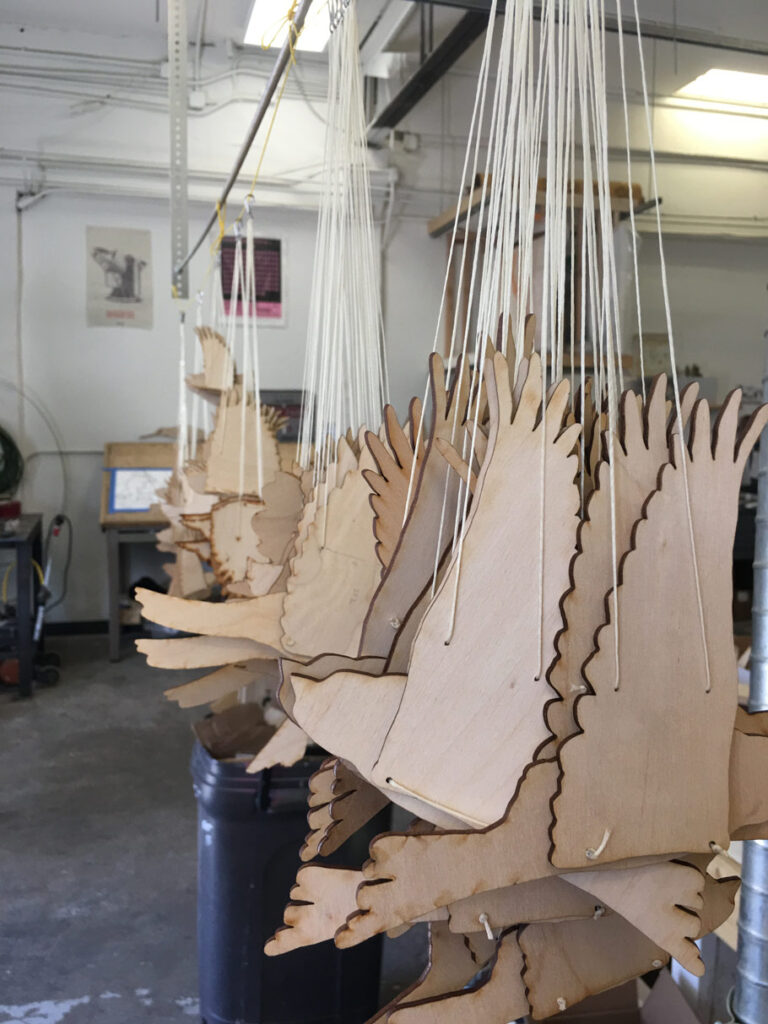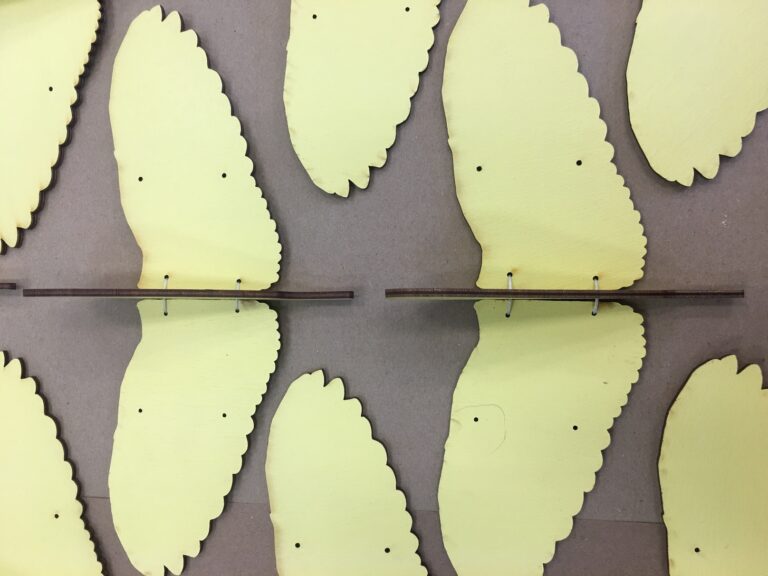Culture Shock: Wings Of Change
Flight Tests Art-Making As Social Practice


Courtesy of Sheri Crider

Birds await flight in Crider’s workshop
Courtesy of Sheri Crider

More than 650 birds of 70 species are included on the exhibition on migration, incarceration and empathy
Courtesy of Sheri Crider

The birds of Flight carry many stories as the perch up high at the UNM Art Museum
Courtesy of Sheri Crider








